SUMMARY
This is AI generated summarization, which may have errors. For context, always refer to the full article.
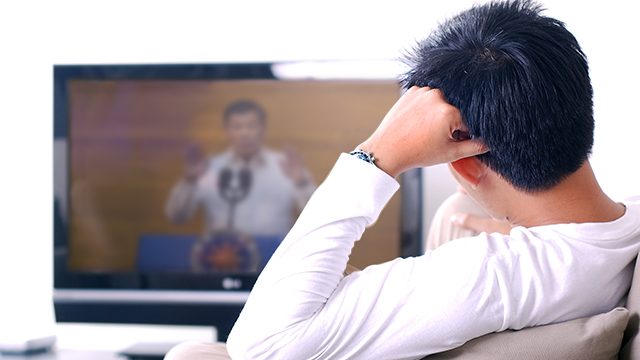
On July 23, 2018, President Rodrigo Duterte will deliver his third state of the nation address.
Duterte’s speeches — the first two SONAs, especially — always come across as part calls to arms, part action flicks, part improv comedies. And with the SONAs being star-studded, red-carpet affairs, I realized you could actually watch them as movies.
With that in mind, here’s my review of President Duterte’s first two SONAs… as cinematic experiences.
Prologue
Duterte’s 3 terms as mayor were just a prologue; after which, his presidential run got stuck in development limbo — mostly due to his own coyness over running. (READ: Rodrigo Duterte: Sorry, I will not run for president or Duterte: ‘I am not running for president’)
But he eventually greenlit his candidacy, and later won the 2016 presidential elections by a landslide. The president’s first SONA dropped after much anticipation.
The First State of the Nation Address (2016)
Here, the newly-minted protagonist takes center stage to deliver his monologue. And like any good genre piece, the first SONA spends a good amount of time on world-building… or rather, establishing Duterte’s worldview.
As for the script, this one is pure fan-service.
There are threats to drug lords (“We will not stop until the last drug lord, the last financier, and the last pusher have surrendered or put behind bars — or below the ground, if they so wish”), reassurances to those pesky human rights advocates (“My administration shall be sensitive to the state’s obligations to promote, and protect, fulfill the human rights”), big reveals (“I hope the military and the police will not react on this” he says before spilling intel), and jabs at critics (“Kung wala ka ring magagawa, mag-shut up ka”).
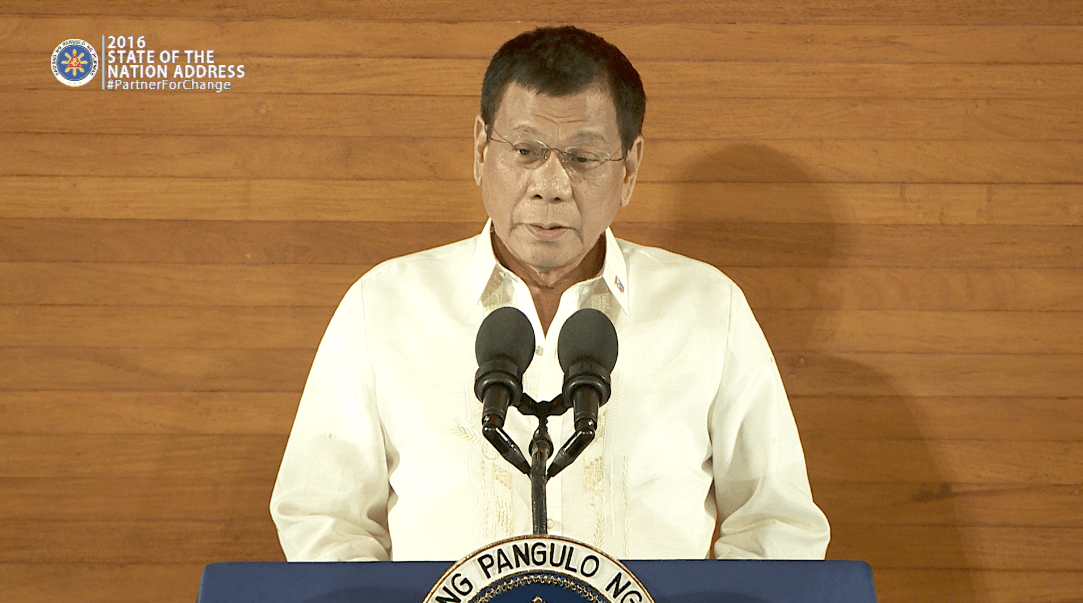
All of which would be great, if it weren’t for some plot holes in the narrative.
For example, later in his monologue, Duterte vaguely implies that the big drug lords are abroad (“Ma’am, nandoon yan sila sa labas, wala dito. Maghanap ka ng isang batalyon na pulis para hulihin natin doon. Kung kaya natin. They direct the traffic of drugs sa kanila” and most tellingly: “I’ll give you the name, I’ll give you the country”).
If that were the case, how is he going to put them underground? A tighter script would have made these statements go more smoothly.
There is also an over-reliance on federalism, which Duterte wants to deploy as a sort of deus ex machina for what ails the country. Federalism is the One Ring in this story; the all-powerful tool that could both empower and corrupt.
The SONA was helmed by acclaimed director Brillante Mendoza.
While Mendoza has built a career out of gritty urban dramas, there’s a disconnect between his direction and the president’s demeanor. Duterte is supposed to be the everyday hero, the leader who’s down in the trenches with the common tao. But Mendoza’s now-infamous worm’s eye angles present Duterte as an overbearing, almost surreal, figure.
It makes Duterte look like a, well, politician. And when your subject is regarded as an antidote to the political establishment, that’s not exactly a good thing. (READ: Brillante Mendoza on directing SONA: I’ll capture the true Duterte)
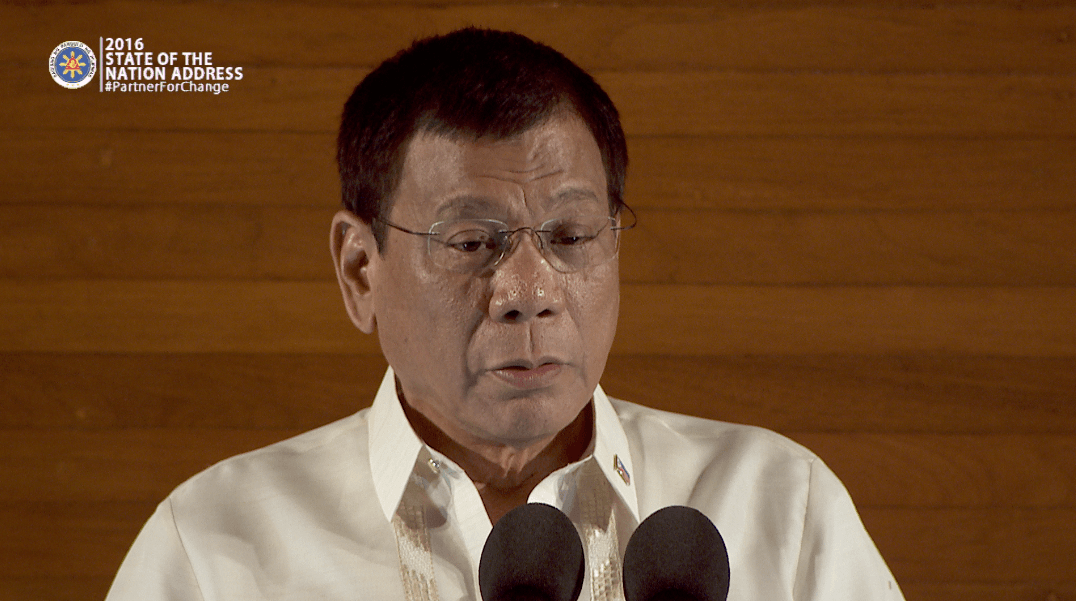
To be fair to Mendoza, he does use a lot of eye-level closeups of the president, as well as tight shots of the hands. The latter does a lot to establish the humanity and sincerity of the president. (I don’t recall former President Benigno Aquino’s SONAs providing anything of this sort.) (READ: Brillante Mendoza’s SONA 2016 direction gets mixed reviews)
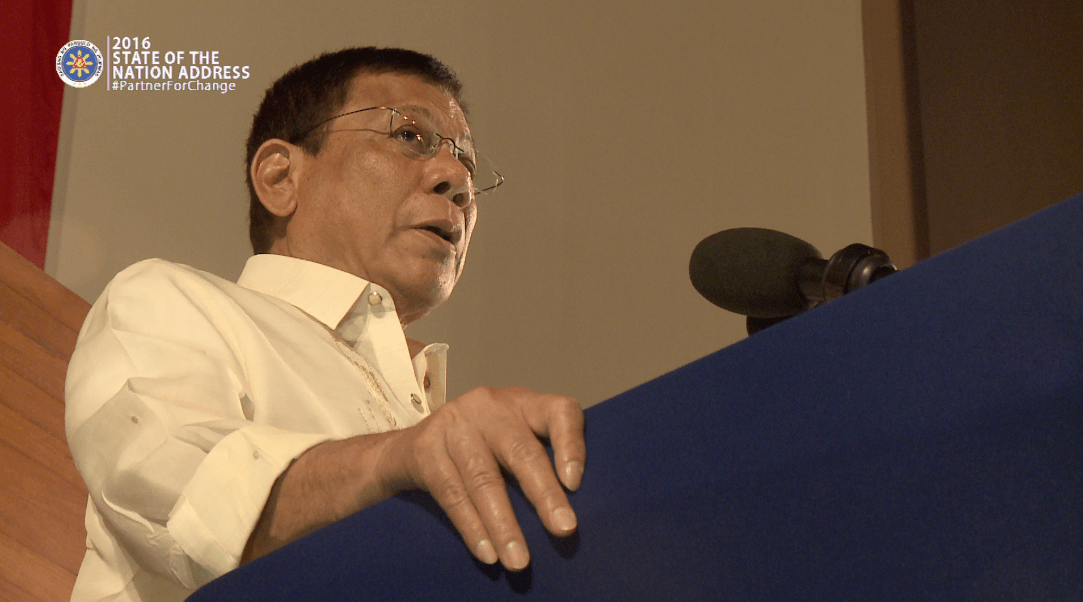
The Second State of the Nation Address (2017)
As a sequel, the 2017 SONA is a darker, more brooding counterpart to the first installment.
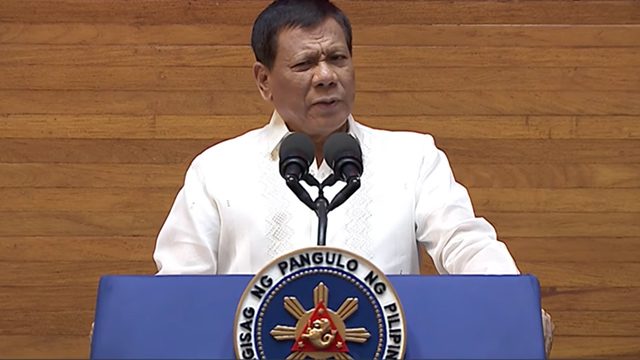
The SONA 2 traverses the same lines of The Empire Strikes Back, The Two Towers, and The Dark Knight — if not in scope, then at least in gravitas. The main character may be more world-weary, but he is more determined than ever.
SONA 2 recycles some of the themes and subjects found in the first address. There is talk of drugs, federalism, corruption… all the things the fandom has come to expect.
What is unprecedented, however, is the epic, profanity-laced rant Duterte goes on in the middle of the SONA. After pressing Congress to reimpose the death penalty, he seems to go off script and rips into the UN and his critics.
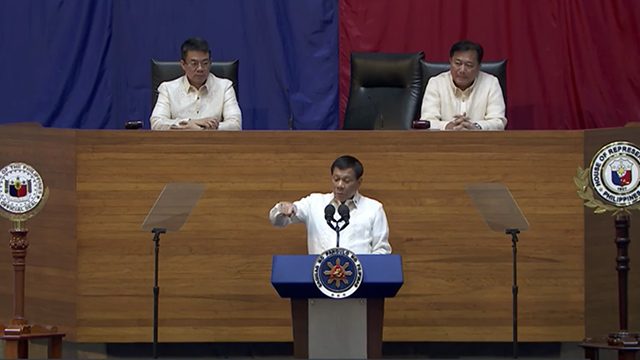
The performance was pretty memorable — it’s up there with the greatest improvised scenes in cinema, including Robert De Niro’s “You talkin’ to me?” line and that moment in The Fellowship of the Ring where Aragorn breaks his toe and releases an epic scream.
Mendoza was brought back to direct the sequel.
In this SONA, Mendoza looks to be more in-synch with the president. Gone are those contentious worms-eye shots. And the color palette seems to be less desaturated, at least in the close-ups. Mendoza also intersperses striking, monochrome photos during the SONA — it’s a great device that anchors an otherwise unrestrained narrative.
The Third State of the Nation Address (2018)
For the third part, Mendoza is out.
This time, Joyce Bernal is assuming directorial duties. Bernal is known for light-hearted comedies and romance films. (READ: In SONA 2018, Joyce Bernal to capture ‘how much Duterte loves the PH’)
While it’s too early to tell what Bernal’s treatment of the third SONA will be, I’m looking forward to a change of pace. But whatever happens, the third SONA is sure to be an entertaining experience. – Rappler.com
Add a comment
How does this make you feel?
There are no comments yet. Add your comment to start the conversation.